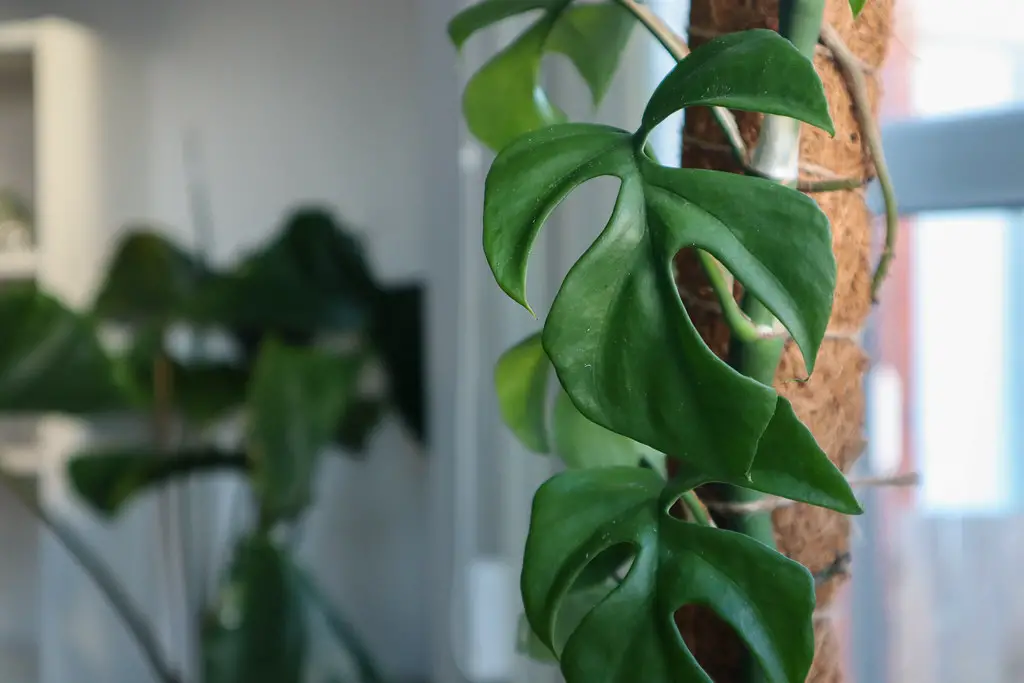Rhaphidophora Tetrasperma, often mistaken for a Mini Monstera due to its resemblance to the Monstera Deliciosa, is an attractive tropical plant that has become increasingly popular as a houseplant. With its glossy green leaves that showcase distinctive fenestrations or splits, it adds an exotic touch to any interior. Native to Southern Thailand and Malaysia, Rhaphidophora Tetrasperma is part of the Araceae family.
Rhaphidophora Tetrasperma is prized for its fast growth and ease of care, making it suitable for both novice and experienced plant enthusiasts. The plant thrives in indirect light, high humidity, and well-draining soil. It is also known for its climbing nature, so providing a stake or trellis will support its growth habit and help it flourish.
One of the unique characteristics of Rhaphidophora Tetrasperma is its small size compared to other plants in the Araceae family. This trait has contributed to its popularity, as it can fit into various indoor spaces without overwhelming the area. With proper care, the plant can reach its full potential and provide endless aesthetic pleasure.
| Aspect | Details |
|---|---|
| Common Names | Mini Monstera, Ginny Philodendron, Piccolo |
| Botanical Name | Rhaphidophora Tetrasperma |
| Family | Araceae |
| Plant Type | Evergreen Vine |
| Mature Size | Up to 12 feet tall |
| Sun Exposure | Bright, indirect light |
| Soil Type | Well-drained, peat-based |
| Hardiness Zones | 10-11 |
| Native Area | Southern Thailand, Malaysia |
Rhaphidophora Tetrasperma Care
Caring for Rhaphidophora Tetrasperma is relatively straightforward, especially if you are familiar with tropical plant care. These plants need a combination of bright, indirect light and regular watering to thrive. The use of a humidifier or regular misting helps in maintaining the required humidity levels.
Rhaphidophora Tetrasperma is also adaptable and can tolerate some fluctuations in care, but consistent monitoring and proper maintenance practices will ensure the healthiest growth. Providing a suitable climbing structure is beneficial for encouraging vertical growth, and regular pruning can help in shaping the plant.
Light Requirement for Rhaphidophora Tetrasperma
Rhaphidophora Tetrasperma thrives in bright, indirect light. Avoid placing it in direct sunlight, which may scorch the leaves. A north or east-facing window is typically a suitable location.
Soil Requirements for Rhaphidophora Tetrasperma
A well-draining, peat-based soil is ideal for Rhaphidophora Tetrasperma. A mixture of peat moss with perlite or sand ensures proper aeration and drainage, helping the roots stay healthy.
Water Requirements for Rhaphidophora Tetrasperma
Water Rhaphidophora Tetrasperma when the top inch of the soil feels dry. Be sure to allow excess water to drain, as standing water can cause root rot.
Temperature and Humidity
Rhaphidophora Tetrasperma prefers temperatures between 65-80°F (18-27°C) and high humidity levels. Using a humidity tray or room humidifier can help maintain the desired moisture levels.
Fertilizer
Feed Rhaphidophora Tetrasperma with a balanced liquid fertilizer every 4-6 weeks during the growing season. Dilute the fertilizer to half the recommended strength to avoid overfeeding.
Pruning Rhaphidophora Tetrasperma
Regular pruning helps maintain the shape and size of the plant. Remove any dead or yellowing leaves, and trim the vines as needed to keep the plant looking its best.
Propagating Rhaphidophora Tetrasperma
Propagation can be achieved through stem cuttings. Cut a segment with at least one leaf and place it in water or soil. Roots should appear within a few weeks.
How To Grow Rhaphidophora Tetrasperma From Seed
Growing Rhaphidophora Tetrasperma from seed is less common and can be a slow process. Sow the seeds in a well-draining soil mix and keep them in a warm, humid environment.
Common Pests & Plant Diseases
Spider Mites and Aphids
Regular inspection and cleaning can prevent infestations. If detected, treat with insecticidal soap.
Root Rot
Caused by overwatering. Ensure proper drainage to avoid this issue.
Common Problems With Rhaphidophora Tetrasperma
Yellowing Leaves
Often caused by overwatering or poor drainage. Check the watering schedule and soil condition.
Lack of Leaf Splitting
May be due to insufficient light. Move the plant to a brighter location.
Leggy Growth
Occurs when there’s inadequate light. Re-positioning the plant or adding supplemental lighting can help.
Pro Tips
- Provide a climbing support for vertical growth.
- Monitor humidity levels and adjust as needed.
- Avoid overwatering; allow the top soil to dry between watering.
- Keep away from direct sunlight to prevent leaf scorching.
- Regularly inspect for pests and treat promptly if found.




